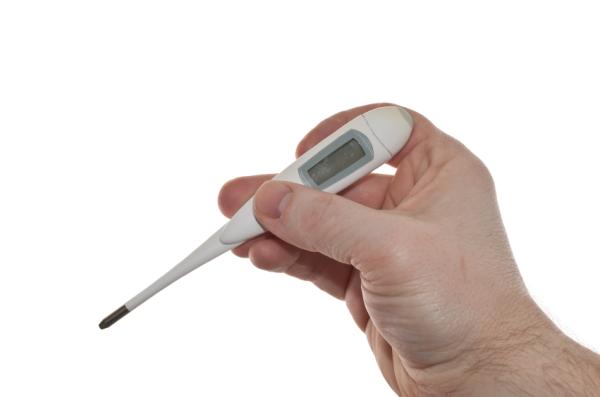
Body temperature allows us to evaluate the efficiency of the thermal regulation which occurs in the human body in relation to environmental temperatures and the intensity of the activities we do. The peripheral temperature (skin, mucous membranes, muscles, limbs, etc.) varies a lot. Normal body temperature varies depending on gender, recent activity, consumption of food and fluids, the time of day and, in women, the menstrual cycle phase they are currently in. In this OneHowTo article, we want to give tom explain if a body temperature+ of 36-36.1 to 36.2 degrees Celsius is normal or not.
Adult body temperature
A body temperature of 36-36.1 to 36.2 is normal and there should be virtually no risk to health. Normal body temperature of human adult varies between 36.5-37.5. General rules:
- Hypothermia: when the temperature is less than 36 or less.
- Feverishness: when the temperature is between 37.1 to 37.9
- Hyperthermia: when the temperature is less than 38.
Body temperature in children and babies
A child's body temperature of 36-36.1 to 36.2 is a bit low and you should take some precautions to avoid any risk of hypothermia. Children must have a minimum body temperature of 36 degrees.

Auxillary temperature
A body temperature of 36-36.1 to 36.2 is normal and there should be virtually no risk to health. Some children have auxiliary temperatures of less than 36ºC which can appear normal. We call this situation physiological hyperthermia.
Oral temperature
A body temperature of 36-36.1 to 36.2 is normal and there should be virtually no risk to health. It is recommended to measure oral temperature in all patients except in those who are unconscious, suffer mental confusion, convulsions, mouth, throat or nose problems and children less than 6 years old.
Rectal temperature
A child's body temperature of 36-36.1 to 36.2 is a bit low and you should take some precautions to avoid any risk of hypothermia. The result tends to be 0.5 to 0.7 ºC higher than oral temperature. A rectal temperature reading is recommended for patients less than 6 years old.
Influences on body temperature
Several factors affect body temperature and that can change temperature by some tenths of a degree, but a temperature of 35 degrees below body temperature is very alarming. The fitness of the individual, especially the degree of obesity. Age, being worse in the elderly and those on their sick bed. Other external factors that may increase someone's body temperature: Adaptation known as acclimatization. The degree of atmospheric humidity: Humidity increases the difficulty of reabsorbing liquids. Dark and thick clothing are more harmful. Diseases that hinder the absorption of liquids: diabetes, heart, lung and kidney impairment. Diseases associated with increased heat production: infections, hyperthyroidism and those that come with a fever. Consumption of certain medications: sedatives, amphetamines and antidepressants. Psychopathy and states of acute alcoholism or that decrease tolerance to heat.
This article is merely informative, oneHOWTO does not have the authority to prescribe any medical treatments or create a diagnosis. We invite you to visit your doctor if you have any type of condition or pain.
If you want to read similar articles to Is a body Temperature of 36-36.1-36.2 Normal?, we recommend you visit our Diseases & secondary effects category.
- Auxillary temperature should be taken with a thermometer from the area during a period of approximately four (4) minutes.